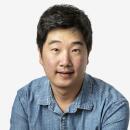In L.A.’s Santee Alley, Korean and Latino communities bond in an acupuncture shop
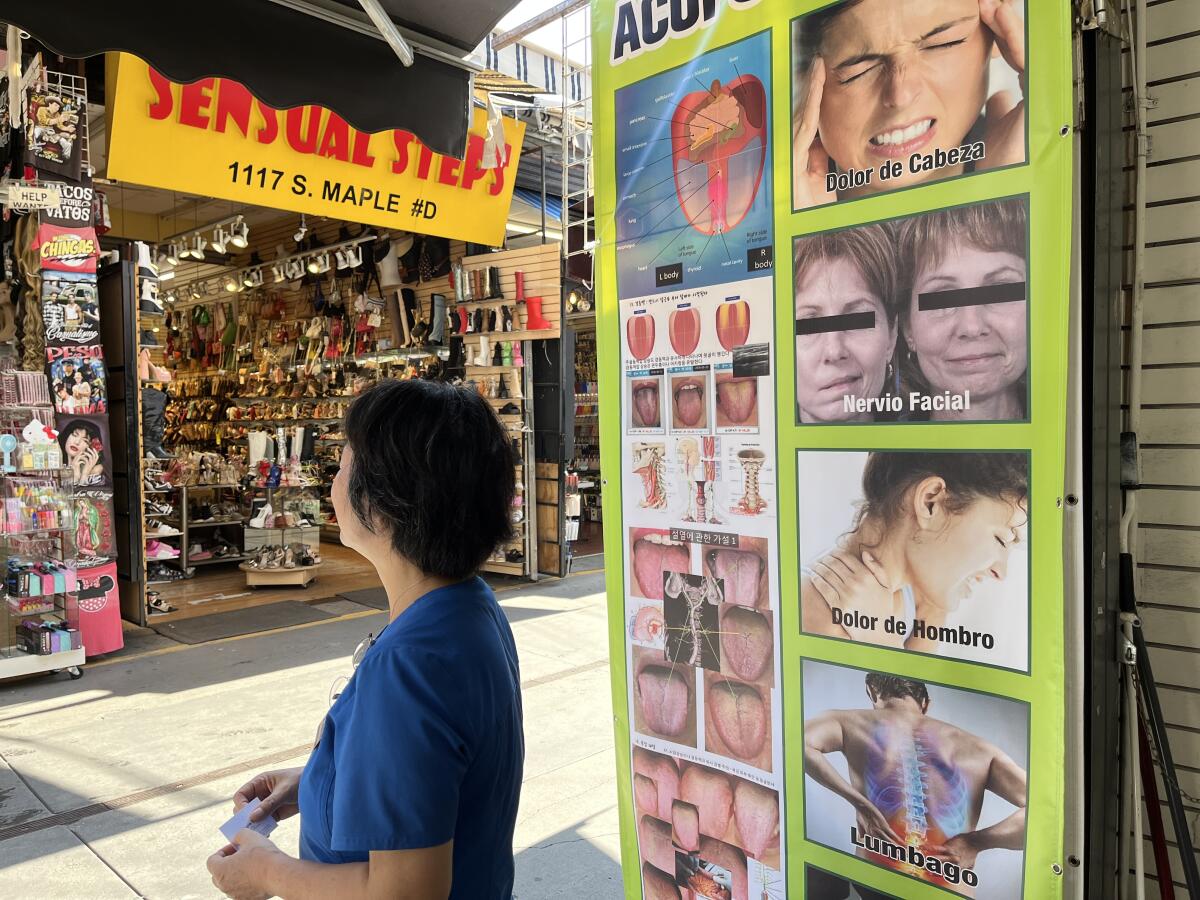
Good morning. It’s Monday, Oct. 30. I’m Helen Li, a reporting fellow for The Times. Here’s what you need to know to start your day.
- In L.A.’s Santee Alley, Korean and Latino communities connect in acupuncture
- Actor Matthew Perry dies at 54
- Blink-182’s Travis Barker on survival, fatherhood and music
- And here’s today’s e-newspaper
Sign up for Essential California
The most important California stories and recommendations in your inbox every morning.
You may occasionally receive promotional content from the Los Angeles Times.
Finding common culture in an acupuncture shop
For two blocks near East Pico and Santee Alley, there are dozens of little shops filled with the latest counterfeit Gucci and Prada bags, Inter Miami Messi jerseys and bejeweled sunglasses. There are ATMs galore — cash is king. The “ZZT!” sound of a Taser echoes through the air as shopkeepers tried to attract attention.
In the middle of it all is an open air acupuncturist shop. Peek inside, and you’ll see rows of beds with patients lying face down.
“Hola! Masaje?” Joy Kim called out to potential customers. She’s an acupuncturist and herbalist who has been working in Santee Alley for the last three years.
When I first arrived in Los Angeles and came across Santee Alley, I felt at home. The scenes reminded me of time I’ve spent in countries where street bazaar stalls and the informal economy connect communities instead of bricks-and-mortar stores more common in America.
My colleague Astrid Kayembe grew up shopping with her mom for knockoffs in “Los Callejones de Los Ángeles” (as Santee Alley is affectionately known) and shipping boxes back to her Belizean relatives.
“It’s always felt like this intersection of cultures, where you would go if you were a consumer of color to go to be,” she told me. “You can find everything.”
What intrigued me most was that intersection of cultures and how the alley spotlights L.A.’s diversity as immigrants from many backgrounds interact, forming a rich and unique community. Nowhere was this blend clearer to me than the acupuncturist shop, with its Korean roots, Latino clientele and shared medicinal practices.
My colleague Jeong Park and I spent a recent afternoon with the shop’s staff and customers to learn about their community.
Word of mouth
The shop is one of four in the alley and customers have come from far and wide for treatment. The shop manager, who declined to give his name, told us that 90% of the clientele are Hispanic and many are tourists that come based on word of mouth.
That’s part of what brought Laura and Eddie Aguilera to the clinic. Eddie has pain in his left shoulder from lifting heavy boxes at work and he had often walked past the shop. The $60, hour-long cupping and acupuncture treatment he received there provided immediate relief. So much so that he told Laura, who opted to try acupuncture for fertility after researching the practice online. Signs on the walls also advertise treatments for common body aches such as headaches, back and knee pain.
“It’s all in circulation,” Laura told me. “It doesn’t hurt to try.”
But it’s not just the treatment that she finds appealing. She also appreciates that Joy will pray with her after treatment.
Many Korean American families have found community with the church, and the majority of Latinos in the city identify as Christian.
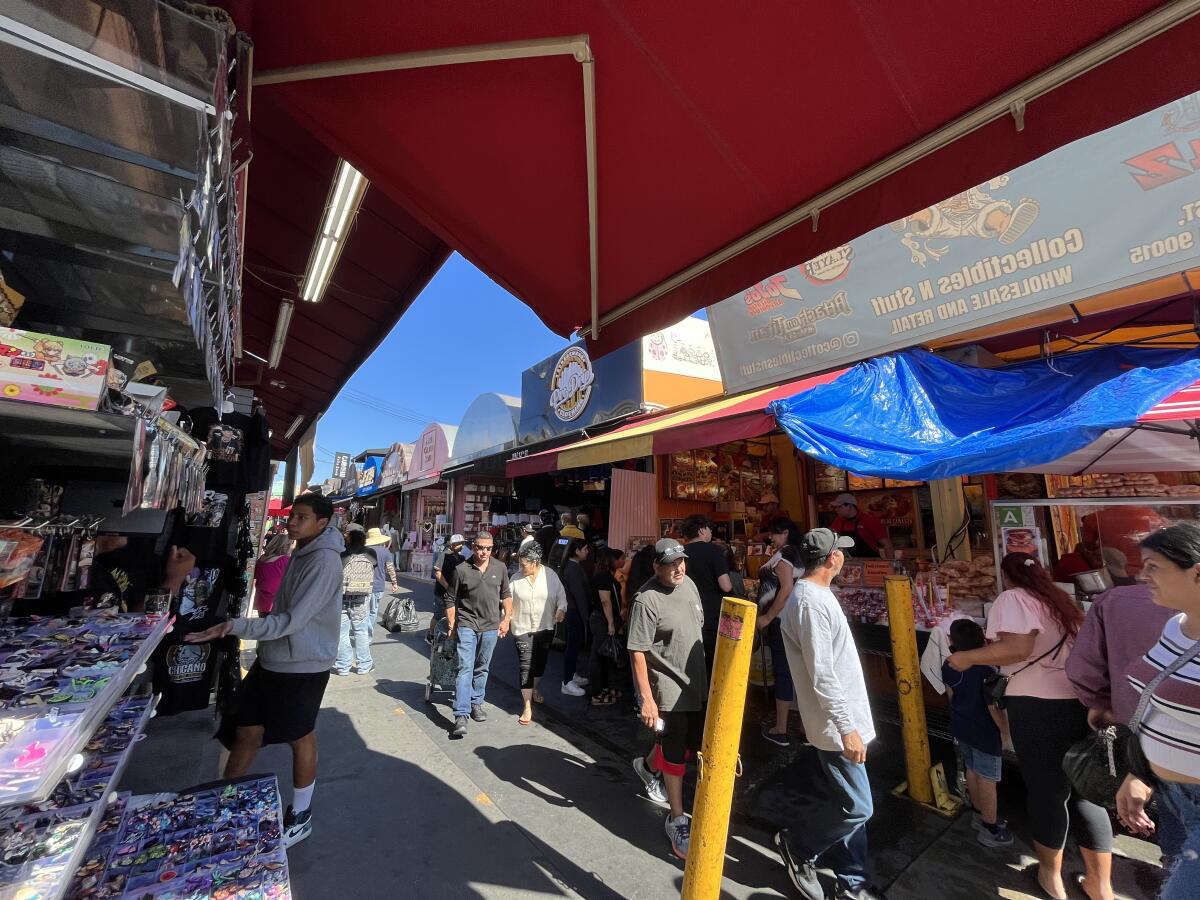
This bridge in spirituality also extends to the alternative medicinal practices. The shop owner told us that the practice of cupping — applying heated suction cups on skin to increase blood flow — has a parallel to traditional curanderismo “fire cupping”” practices in Latin America.
Kim said she often communicates with clients in Spanish, which she learned in high school. In the alley, the shop and others like it advertise Ventosas — cupping in Spanish.
For $40, you can get half an hour of cupping done, and acupuncture treatment for $60. Not all shops take insurance, but some do.
“Acupuncture, it’s not only for Koreans,” Kim told Jeong and me.
Affordable relief
Whether the shops remain will depend on how the communities that visit them shift in the future.
The history of Korean migration to Los Angeles goes back to the 1970s. One of the first industries immigrants cultivated was the garment district downtown, an area that includes Santee Alley.
Edward Chang, an ethnic studies professor at UC Riverside, told me that back in the 1970s and ‘80s, it was more common for Korean immigrant women to work in the garment district and places like Koreatown were mostly ethnic enclaves that catered to fellow Korean immigrants. Now, many of the people who work in the garment industry are immigrants from Latin America.
“Many businesses — barbecue, restaurants, bakeries — now cater to a multi-ethnic clientele,” Chang said.
The shop’s manager told us that during the pandemic, one of the acupuncture shops in the alley closed down. He has also noticed that the crowds are smaller and people are walking around empty-handed. He used to see lots of shopping bags.
“Since we provide treatment anyway, people come here regardless of whether they have money or not, but the sales at other clothing shops have decreased a lot,” he said in Korean.
Chang told me that the shops play a practical role for Korean and Latin American communities.
“Western medicine is so expensive and unaffordable for many immigrants, whereas traditional acupuncture is more affordable,” Chang said. “And if you believe in it, you know, it’s a very effective way to deal with the pain and other issues.”
But they’re also spaces that highlight just how connected these communities have grown in L.A.
“Korean immigrant and Latin American immigrant relations are much more complex,” he said. “They not only share common space, workers and employer relations, they are neighbors. And they share a common immigrant ideology.”
Today’s top stories
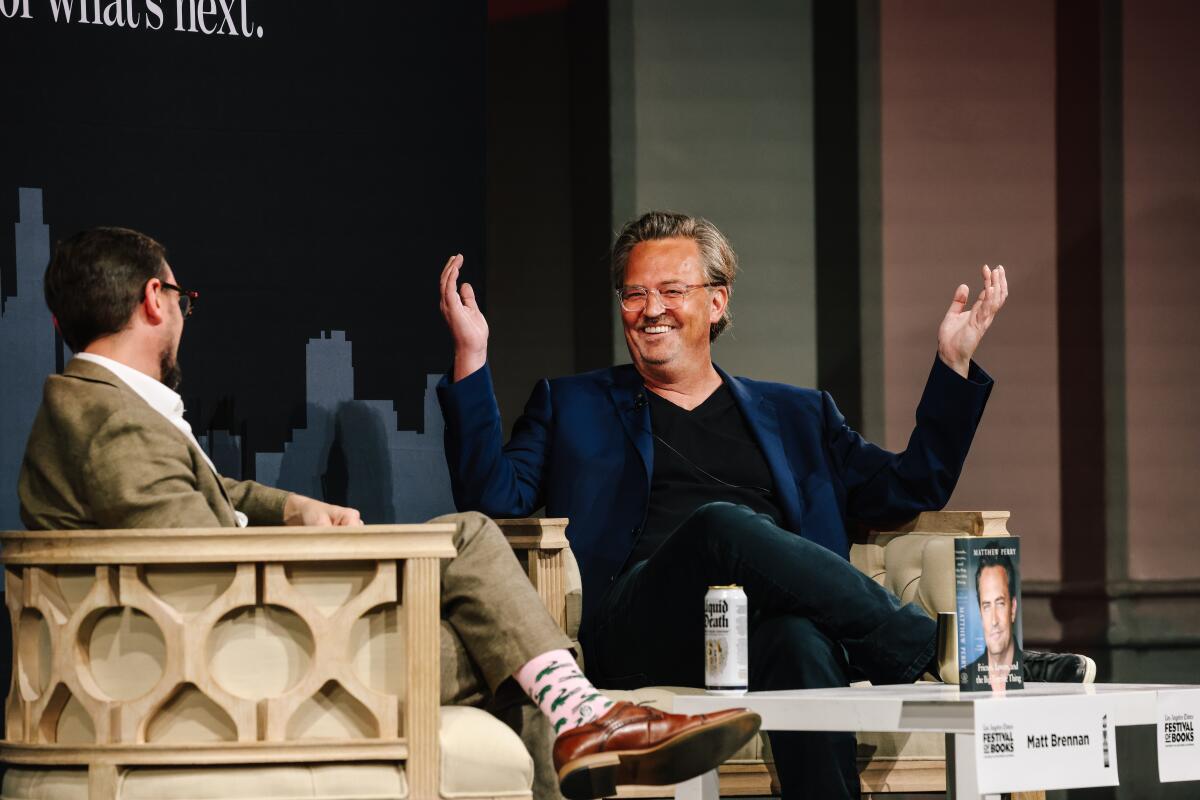
Remembering Matthew Perry
- “Friends” star Matthew Perry was found dead Saturday in a hot tub at his Los Angeles home, law enforcement sources said. He was 54.
- Determining Matthew Perry’s cause of death is expected to take time.
- Appreciation: Perry was easy to love. And it went deeper than his acting.
- Hollywood remembers “comedic genius” Perry: “His legacy will live on.”
- Matthew Perry starred in a hit show. But for those fighting addiction, his greatest legacy is his memoir.
Maine shooting
- Family and friends are mourning the 18 people killed in Lewiston, Maine, in the deadliest mass shooting in state history. Here’s what we know about them.
- Four of those killed were members of the Deaf community who had gathered at the bar. Their deaths are drawing grief and support from across the country.
- Police have still not declared a motive in the case, but said the gunman showed signs of mental illness.
War in the Middle East
- Information emerges as 36-hour Gaza communication blackout lifts.
- Ex-Jewish Defense League bomber’s parole a ‘gut punch’ for Palestinian Americans.
- Thousands of people waving the black, green, red and white Palestinian flag rallied in downtown L.A. on Saturday afternoon to protest Israel’s escalating air and ground war against Hamas in the Gaza Strip.
- Los Angeles is home to the second-largest Jewish community in America, and the last few weeks have brought anguish and anger, confusion and conflicts as people reevaluate their community, beliefs and relationships.
- Inside the desperate lobbying effort to push the U.S. to save Hamas hostages.
Sports
- LeBron James’ NBA debut anniversary spoiled in Lakers’ overtime loss to Kings.
- Chargers offense awakens with scores on first five drives in rout of Bears.
- It’s thumbs down for Rams, Matthew Stafford after blowout loss to Cowboys.
- Tommy Pham wanted to be a Dodger. Now he’s a standout and clubhouse hit for Arizona.
More big stories
- Whether it’s tourism, education, real estate or high tech, no state has more riding on the future of U.S.-China relations than California. The state could pay the price for growing tensions between the two countries.
- The first Santa Ana wind event of the season could bring strong gusts and wildfire danger to Ventura and Los Angeles counties through Monday night.
- The Los Angeles County Department of Mental Health is making a new push to recruit mental health workers as job vacancies hold back efforts to address homelessness.
- A new SoCal underground water storage project aims to keep supplies flowing during drought.
- The Los Angeles Sheriff’s Department relies on range trailers, but they catch fire with a frequency that several firearms experts said was surprising.
- The Los Angeles Police Department announced Saturday that it has been “temporarily” barred from YouTube after the department put up footage of a violent attack on the video website.
Get unlimited access to the Los Angeles Times. Subscribe here.
Commentary and opinions
- Jean Guerrero: Día de Muertos used to scare me. Now I appreciate a holiday when the living commune with the dead.
- Robin Abcarian: She got fired for condemning Palestinians. He got fired for blaming Israel. Is that right?
- Erika D. Smith: What a refusal to study turning a freeway into housing says about L.A.’s future.
- Doyle McManus: Could wars in Ukraine, Gaza bring “major changes in the international order”? Fiona Hill thinks so.
- Opinion: Crooked lawyers were crucial to Trump’s Jan. 6 plot. We clearly need to reform the profession.
- Opinion: I’m 17, trans and loving life. Joy should be the norm for trans people.
Today’s great reads

Travis Barker wants to be ‘superhuman.’ Catastrophe will do that to a man. At 47, it seems Barker is being karmically rewarded for his perseverance. Blink-182 is back together with a new album and he’s preparing to become a father again with wife Kourtney Kardashian. In the latest “For Real With Amy Kaufman” column, Barker gets candid about where he is at in this stage of his life.
How can we make this newsletter more useful? Send comments to essentialcalifornia@latimes.com.
For your downtime
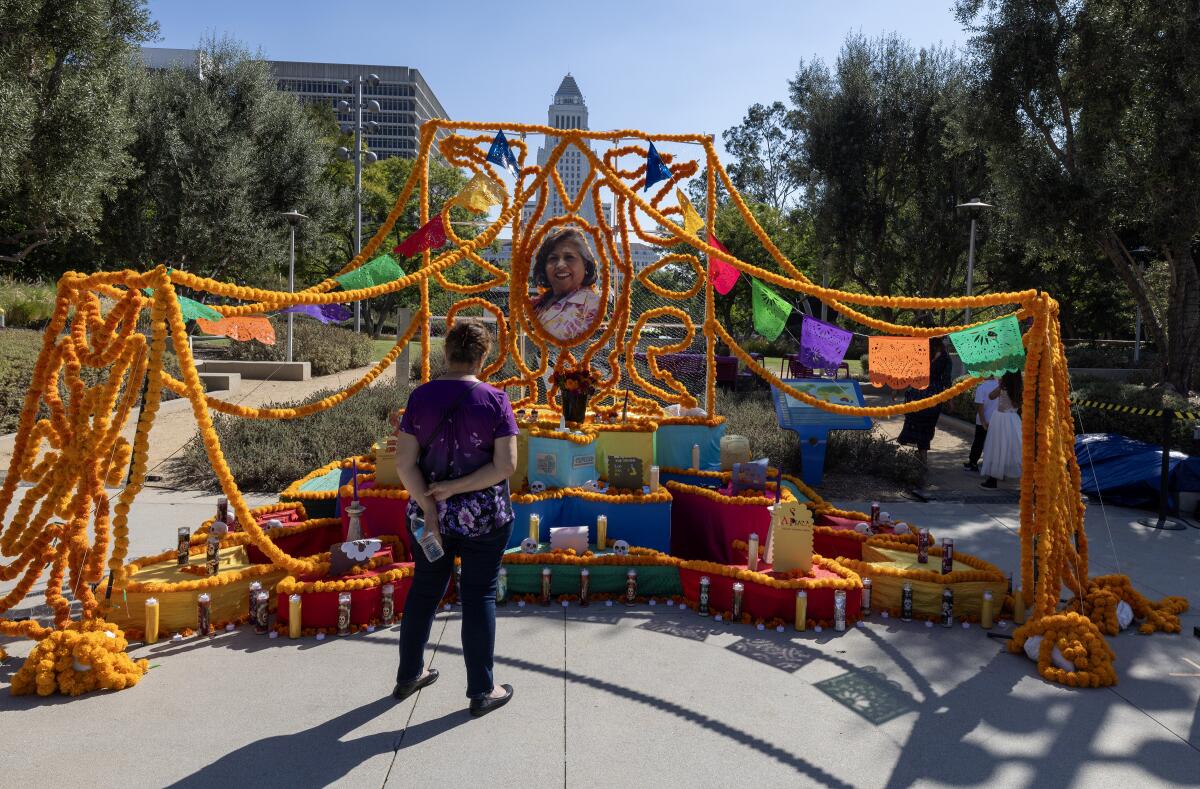
Going out
- 💀🌺 52 ways to celebrate Día de Muertos in L.A. and O.C. this week.
- 🍽 Saved by staff, Pacific Palisades’ Gladstones, one of L.A.’s most iconic beachfront restaurants, will stay open — at least for now.
- 🎬 Review: ‘The Delinquents,’ a superb existential heist-comedy, might just steal your heart.
Staying in
- 🎧 How the L.A. area creator of ‘Otherworld’ made the breakout podcast of paranormal encounters.
- 🦋🕯 Our digital Día de Muertos altar honors your loved ones. Create your own entry here.
- 🎃 Here’s some recipes to help you use up those leftover Halloween pumpkins.
- ✏️ Get our free daily crossword puzzle, sudoku, word search and arcade games.
And finally ... a great photo
Show us your favorite place in California! Send us photos you have taken of spots in California that are special — natural or human-made — and tell us why they’re important to you.
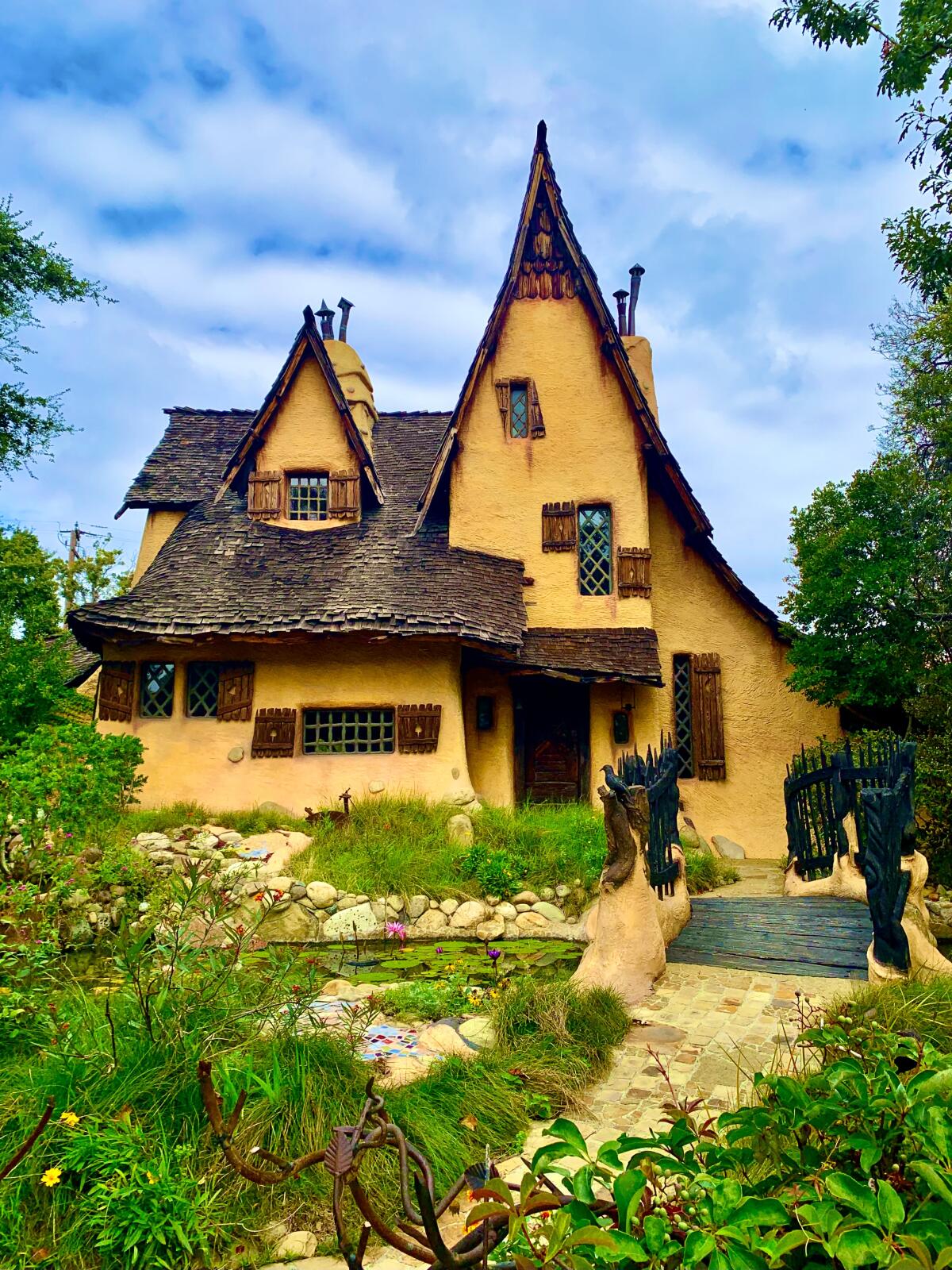
Today’s great photo is from Elyse Jankowski of Los Angeles: The Spadena House in Beverly Hills. Elyse writes: “The iconic Spadena House in Beverly Hills is frequently visited this time of year as its storybook style reflects spooky Halloween vibes.”
Have a great day, from the Essential California team
Helen Li, reporting fellow
Jeong Park, Asian American communities reporter
Laura Blasey, assistant editor
Check our top stories, topics and the latest articles on latimes.com.
Sign up for Essential California
The most important California stories and recommendations in your inbox every morning.
You may occasionally receive promotional content from the Los Angeles Times.

